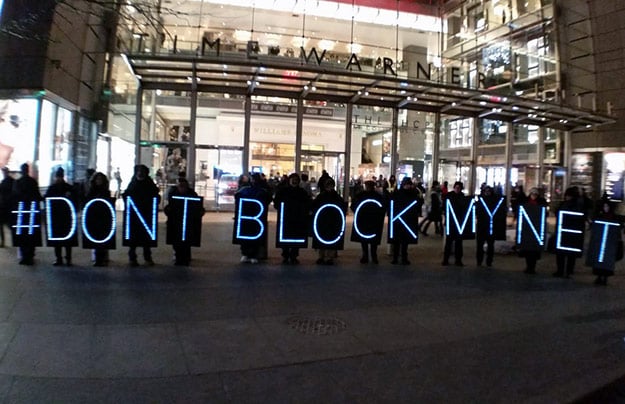Stanford Engineers Develop 'Network Cookies' To Put Consumers In Control Of Net Neutrality
One of the most important and hotly debated topics of the Internet era has been net neutrality, the concept that all web traffic should be treated equally. Internet service providers and wireless carriers continue to fight against net neutrality rules and want the right to charge services like Netflix for faster access into homes, but the Federal Communications Commission (FCC) has so far been able to keep them at bay. Perhaps one day the government agency won't have to intervene, as engineers at Stanford University have come up with a solution that would allow users to choose which traffic gets preferential treatment, and when.
Professor Nick McKeown, Associate Professor Sachin Katti, and electrical engineering PhD Yiannis Yiakoumiss posit that Network Cookies make it possible to have both preferential delivery and an open Internet, satisfying both sides of the debate.
"So far, net neutrality has been promoted as the best possible defense for users," Katti said. "But treating all traffic the same isn’t necessarily the best way to protect users. It often restricts their options and this is why so-called exceptions from neutrality often come up. We think the best way to ensure that ISPs and content providers don’t make decisions that conflict with the interests of users is to let users decide how to configure their own traffic," McKeown says.
Using their technology, users would be able to put any application or website in the so-called Internet fast lane (or zero rate traffic, as it's referred to on mobile), not just the most popular services or ones with bigger bank accounts.
"This is particularly important for smaller content providers – and their users – who can’t afford to establish relationships with ISPs," McKeown adds.
Network Cookies are also practical to deploy, McKeown says, explaining that the system wouldn't overwhelm the user or bog down devices and network operators. There are a variety of underlying protocols at play that would prevent unwanted side effects.
The researchers tested their theory in a home setting in collaboration with Google. In the test, users could send a fast lane service request through their home routers to the ISP's network by way of an application called Boost. They rolled out the test to 161 homes and found that users most often chose to fast track websites related to news, video, voice, and sports from around the world.
In a separate online survey of 1,000 smartphone users, respondents indicated they would probably choose to zero-rate many different applications if they were able to.
"It immediately became clear that – given the choice – users will express their own unique preferences," Yiakoumis said.
This is the first technology of its kind. Up until this point, there hasn't existed a solution that would put users in charge of fast lane traffic, nor has there been any indication that people would use such tools if available to them. The limited test run shows that people would use them.
Professor Nick McKeown, Associate Professor Sachin Katti, and electrical engineering PhD Yiannis Yiakoumiss posit that Network Cookies make it possible to have both preferential delivery and an open Internet, satisfying both sides of the debate.
"So far, net neutrality has been promoted as the best possible defense for users," Katti said. "But treating all traffic the same isn’t necessarily the best way to protect users. It often restricts their options and this is why so-called exceptions from neutrality often come up. We think the best way to ensure that ISPs and content providers don’t make decisions that conflict with the interests of users is to let users decide how to configure their own traffic," McKeown says.
Using their technology, users would be able to put any application or website in the so-called Internet fast lane (or zero rate traffic, as it's referred to on mobile), not just the most popular services or ones with bigger bank accounts.
"This is particularly important for smaller content providers – and their users – who can’t afford to establish relationships with ISPs," McKeown adds.
Network Cookies are also practical to deploy, McKeown says, explaining that the system wouldn't overwhelm the user or bog down devices and network operators. There are a variety of underlying protocols at play that would prevent unwanted side effects.
The researchers tested their theory in a home setting in collaboration with Google. In the test, users could send a fast lane service request through their home routers to the ISP's network by way of an application called Boost. They rolled out the test to 161 homes and found that users most often chose to fast track websites related to news, video, voice, and sports from around the world.
In a separate online survey of 1,000 smartphone users, respondents indicated they would probably choose to zero-rate many different applications if they were able to.
"It immediately became clear that – given the choice – users will express their own unique preferences," Yiakoumis said.
This is the first technology of its kind. Up until this point, there hasn't existed a solution that would put users in charge of fast lane traffic, nor has there been any indication that people would use such tools if available to them. The limited test run shows that people would use them.


